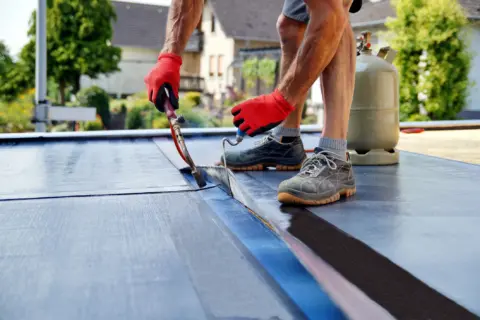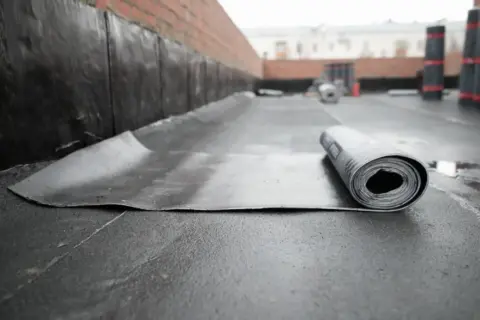What Wood is Used for Roofs
Wood is a timeless and natural choice when choosing the perfect roofing material for your home. Wood roofing offers a unique aesthetic appeal and provides insulation and energy efficiency. However, it’s essential to understand that not all wood types are created equal regarding roofing. This comprehensive guide will delve into what wood is used for roofs, the world of wood roofing, and help you decide what wood to use for your roof.
Types of Wood for Roofs
When choosing the right type of wood for roofs, several options exist. Each type of wood has its unique characteristics and benefits. Here are some of the most common types of wood used for roofing:
Cedar: Cedar is a popular choice for roofing due to its natural resistance to decay and ability to withstand various weather conditions. It provides durability and adds a touch of rustic elegance to your home.
Pine: Pine is a cost-effective wood roofing material, making it an excellent choice for those on a budget. However, it’s essential to understand its limitations and where it’s best suited for roofing.
Redwood and Cypress: Redwood and cypress are known for their natural beauty and resistance to pests. These premium wood types are often chosen for high-end roofing projects.
Pressure-Treated Lumber: Pressure-treated lumber offers excellent resistance to decay and can be an affordable choice for roofing. It’s a practical option for those looking for durability and cost-effectiveness.
Oak: Oak is a hardwood known for its strength and durability. While it’s less common in roofing, it can be an excellent choice for specific architectural styles and regions.
Douglas Fir: Douglas fir is another option for wood roofing, appreciated for its strength and natural beauty. It’s a versatile choice for a range of roofing projects.
Spruce: Spruce wood is lightweight and easy to work with, making it a suitable choice for roofing in regions with milder climates.
Cypress: Cypress wood is known for its resistance to decay and insects. It’s a popular choice for historical and rustic-style roofing projects.
Fir: Fir wood is affordable and readily available, making it a practical option for budget-conscious homeowners.
Plywood: While not a wood type, plywood is often used as a base for wood roofing materials, providing additional structural support.
Choosing the right type of wood for your roof depends on various factors, including your budget, climate, and aesthetic preferences. Each wood type has advantages and disadvantages, so making an informed decision based on your needs and circumstances is essential.
Factors to Consider
When considering the type of wood for your roofing project, several important factors should be considered to ensure you make the best choice. These factors will influence your decision and help you select the most suitable wood for your specific needs:
Climate and Weather Conditions: Your local climate plays a significant role in determining the right wood type. Different woods have varying resistance levels to moisture, sunlight, and temperature fluctuations. Consider whether the wood can withstand your region’s climate, including heavy rains, snow, or high humidity.
Budget Considerations: Your budget is crucial in choosing wood for your roof. Some wood types are more affordable than others, and you must balance your desired aesthetics and what you can comfortably spend.
Aesthetics and Architectural Style: The appearance of your roof matters. Consider how the wood type will complement your home’s architectural style. Some wood types have a rustic charm, while others offer a more polished or contemporary look.
Local Availability: Availability of certain wood types may vary by region. It’s essential to choose a wood that is readily accessible in your area to reduce costs and ensure a sustainable choice.
Sustainability and Eco-Friendliness: If environmental concerns are a priority, consider choosing wood from sustainable sources. Some wood types, like cedar and redwood, are known for their eco-friendliness due to their replenishing qualities and resistance to pests.
Resistance to Pests and Rot: Different wood types have varying natural resistance to pests and rot. Understanding the local pest situation and the susceptibility of your chosen wood type is crucial for long-term durability.
Maintenance Requirements: Some wood types may require more maintenance than others. Consider how much time and effort you will invest in maintaining your wood roof.
Regulations and Building Codes: Be aware of local building codes and regulations that may dictate using specific wood types or treatments for roofing materials.
By carefully considering these factors, you can make an informed decision about the type of wood that best suits your roofing project by a roofing contractor, ensuring it looks great and stands the test of time in your particular environment.
Benefits of a Wood Roof
Opting for a wood roof offers a range of benefits that can enhance the overall quality of your home. Here are some of the advantages of choosing a wood roof:
Aesthetic Appeal: Wood roofs exude natural beauty and warmth, giving your home a timeless, rustic charm. Wood’s unique grain patterns and textures enhance your home’s curb appeal.
Energy Efficiency: Wood is a natural insulator, helping regulate indoor temperatures. This can lead to energy savings by reducing heating and cooling costs.
Insulation: Wood roofs provide effective insulation, keeping your home comfortable in hot and cold weather. They help maintain a balanced indoor temperature.
Eco-Friendliness: Some wood types, such as cedar and redwood, are sourced from sustainable forests, making them eco-friendly. These woods replenish naturally, minimizing environmental impact.
Customization: Wood roofs can fit your architectural style and design preferences. Wood offers versatility, whether you prefer a classic, rustic look or a more contemporary aesthetic.
Longevity: With proper maintenance, wood roofs can have a long lifespan, typically 20 to 50 years. Their durability can withstand various weather conditions.
Repairability: In the event of damage, wood roofs are relatively easy to repair. Individual shingles or sections can be replaced without the need for extensive re-roofing. Learn “How Long Does It Take to Shingle a Roof?” by checking out this article today!
Sound Insulation: Wood roofs provide excellent sound insulation, reducing noise from rain, hail, and other external sources, creating a peaceful indoor environment.
Natural Weather Resistance: Some wood types, like cedar for cedar roofing, naturally resist decay and are durable against harsh weather conditions, including exposure to sunlight and rain.
Timeless Elegance: Wood roofs never go out of style and maintain their classic appearance. They can significantly increase the value and desirability of your home.
While wood roofing offers numerous benefits, it’s essential to be aware of the potential drawbacks, such as maintenance requirements and susceptibility to pests. Proper care and regular maintenance can help you enjoy the advantages of a wood roof for many years while minimizing its disadvantages.
Drawbacks of Wood Roofing
While wood for roofing offers several benefits, it’s essential to be aware of the potential drawbacks associated with this roofing material. Here are some of the common disadvantages of wood roofing:
Vulnerability to Pests: Wood roofs can be susceptible to pests such as termites, wood-boring insects, and birds. Regular inspections and treatments may be necessary to prevent infestations.
Rot and Decay: Wood is naturally prone to rot and decay, especially when exposed to moisture. This makes proper maintenance and protection against water and roof replacement essential to prolong the life of a wood roof.
High Maintenance: Wood roofs require regular maintenance, including cleaning, sealing, and periodic inspections. Neglecting maintenance can lead to premature deterioration.
Fire Risk: Wood roofs can pose a fire hazard, as wood is flammable. It’s important to take fire safety precautions and, in some areas, abide by specific regulations related to wood roofing.
Cost: While some natural wood types are affordable, premium wood options like cedar or redwood can be expensive. The initial cost can be higher compared to other roofing materials.
Limited Availability: Not all types of wood are readily available in every region. This can limit your choice of wood roofing materials and may result in higher costs for transportation.
Color Fading: Over time, the natural color of wood can fade or change due to exposure to sunlight and weather. Regular sealing and staining may be necessary to maintain the desired appearance.
Weight: Wood roofing materials can be heavier than alternatives like asphalt shingles. Structural reinforcement may be needed to support the added weight, increasing installation costs.
Shorter Lifespan: While wood roofs can have a decent lifespan with proper maintenance, they generally have a shorter lifespan than roofing materials like metal or concrete.
Environmental Impact: Wood roofing can raise environmental concerns if the wood is not sourced from sustainable forests. It’s important to choose wood from responsible and renewable sources.
Despite these drawbacks, many homeowners find the timeless beauty and insulation properties of wood roofing well worth the maintenance and other considerations. Making an informed decision and carefully maintaining your wood roof with a professional roofing contractor can help you enjoy its benefits while mitigating its disadvantages.
Conclusion
In conclusion, the choice of wood for your roofing project is a decision that should be made with careful consideration of various factors. Wood roofing offers a unique blend of aesthetic appeal, natural insulation, and eco-friendliness, making it a desirable option for many homeowners. However, it’s essential to be aware of the potential drawbacks, including maintenance requirements, susceptibility to pests, and fire risks.
To make the most of a wood roof, selecting the correct type of wood that suits your local climate, budget, and architectural style is crucial. Regular maintenance and protection against moisture and pests are vital to extending the lifespan of your wood roof.
A wood roof can transform your home, providing a timeless elegance and creating a comfortable, energy-efficient living space. By making an informed decision and staying proactive with maintenance, you can enjoy the benefits of a wood roof for years. So, choose wisely, and let the natural beauty of wood enhance your home’s appearance and value.
Say Goodbye to Roofing Worries with DVR Roofing! Our expertise in wood roofing will provide you with peace of mind and a roof that will last for years. Why wait? Reach out now, and let’s start the journey to a stunning wood roof.
FAQs: What Wood is Used for Roofs
Is wood roofing a sustainable choice?
Some wood types, like cedar, redwood, and cypress, are sustainable due to their natural resistance to pests and decay.
How often should I inspect and maintain my wood roof?
Inspecting and performing maintenance on your wood roof at least once a year, preferably before extreme weather conditions, is advisable.
Can I install a wood roof myself?
While DIY installation is possible, hiring a professional for proper installation is recommended to avoid potential issues.
What is the expected lifespan of a wood roof?
The lifespan of a wood roof can vary depending on the type of wood and maintenance, but it typically ranges from 20 to 50 years.
Are there any wood alternatives for roofing?
Yes, alternatives like asphalt shingles and metal roofing can mimic the wood look while offering different benefits.


